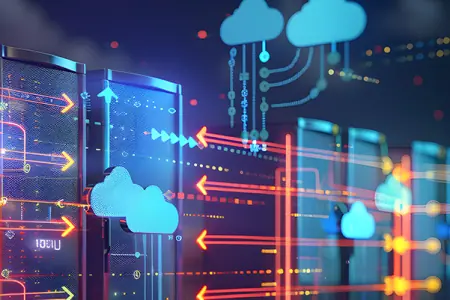
The Evolving Relationship Between Backup and Disaster Recovery
As data proliferates in the information age, data protection becomes more and more important. When computing first began and data was stored in various types of removable media, it quickly became apparent that backups were a good idea, as media could be lost or corrupted. Then it also became apparent that a backup should probably be stored somewhere other than where the primary data was, just in case a disaster of some kind might affect both copies of data in the same location. The need for a safe backup copy was the birth of disaster recovery in IT.
Up until the turn of the century, backup solutions were the only disaster recovery option for most. If a disaster struck and data was lost, recovery from the most recent backup was standard practice. Though the restore data was reliably safe, it was a dated and time-intensive source of recovery. The growing need for applications to always be available eventually created a demand for recovery faster than traditional backups could provide.
Backups Tried to Keep Pace
As organizations began demanding more “9s” for their system uptime—99.9% or 99.999% availability—backup solutions tried to accommodate with lower recovery point objectives (RPOs) and recovery time objectives (RTOs). Recovering from daily backup copies, however, would require multiple days, a delay no longer acceptable for critical systems. Backup solutions implemented more aggressive backup schedules via snapshot technologies or by offloading backups to storage systems. Backup solutions also introduced more recovery options, including bare-metal recovery with system state backups and full backups or virtual machines that could be converted to running virtual machines, speeding up recovery times.
Despite these improvements, backup solutions couldn’t keep up with the RPOs and RTOs being set for business-critical applications and data. Hours of downtime and data loss were simply not acceptable, and the periodic nature of backups wasn’t meeting the challenge of rapid recovery.
Real-Time Replication and Failover
Other rapid disaster recovery technologies emerged to fill the gap where backup faltered. Real-time replication allowed data to be moved to remote locations so quickly that if a disruption occurred, only seconds of data change would be lost. Failover meant that a data set, application, or entire system could be quickly restored to running order following a disruption, even at a remote location. The key challenges to replication and failover were in application protection and the complexity of protection at scale.
While disaster recovery solutions based on replication and failover were initially used on very limited numbers of workloads and applications, orchestration and automation have over time allowed for disaster recovery at scale. As organizations come to rely on applications and data more heavily in a data-driven world, scalability has been instrumental to protecting business-critical assets.
The Benefits of Disaster Recovery and Backup Together
What does all this evolution mean? While backups can still be useful for long-term retention and archiving, today’s rapidly changing IT systems require a disaster recovery solution designed to meet the growing demands on application availability.
For low-tier workloads that can afford to take days or weeks to recover, backup can still be a viable disaster recovery solution. But for data and applications critical to operating a business, lower RPOs and RTOs are needed. Now, both a traditional backup solution and a modern disaster recovery solution are essential in every organization.
Uptime and data protection demand modern disaster recovery, and regulatory compliance demands backups that store data for years. Any organization that can’t afford to be out of business for days at a time has to evaluate their workloads and implement both disaster recovery and backup together. For some organizations, the disaster recovery needs will span thousands of workloads, while others will need to protect only dozens.
Zerto and Backup
Zerto is a leading disaster recovery solution that provides the lowest RTOs and RPOs at scale. Our customers understand the need for both disaster recovery and backup better than most. Zerto has been implemented alongside nearly every backup solution on the market, and our customers have done so in a data protection strategy that provides the best of both solutions.
Since joining Hewlett Packard Enterprise, Zerto is now available alongside HPE GreenLake for Backup and Recovery. Using these two solutions together gives customers the benefit of a single vendor for both low RPOs and RTOs and efficient, cost-effective backup and retention. Contact Zerto for more information about how Zerto and backup can be combined for world-class data protection.
Learn more about combining Zerto with simple, cost-effective cloud backup on HPE GreenLake for Backup and Recovery by reading this datasheet.
 David Paquette
David Paquette 

